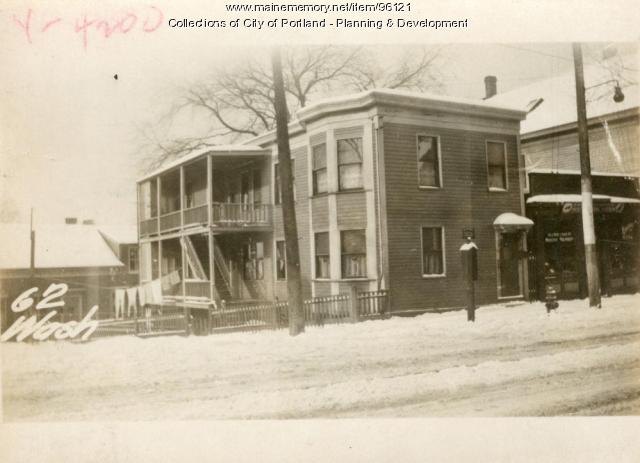The Mazingos of Mississippi and Alabama have been a southern family for hundreds of years.
It appears that the name comes from "MOZINGO" faimly of Virginia in the 1600s, and changed to Mazingo in the early 1800s.
Rosa Lou Mazingo was born in 1943 in Union, Mississippi to William Lee Henry Mazingo (1912-1991) and Mary Emma Rowell (1912-2007), of Union. Rosa Lou married Willard Leon Wiley, son to James and Jessie Wiley of Alabama.
"Lee" was an Army Veteran of WWII, and below is his draft card, with signature.
Lee was born in Decatur, MS, and worked as a farmer, and later as an auto mechanic. He had black hair, blue eyes, and stood at 5'10". His highest level of education was 4th grade. In 1950, the family were living in the Sessums Hotel in Union, which burned down in the 1980s. It was reputed to have excellent food.
Lee's wife, Mary Emma Rowell, was born in Neshoba County, MS to Robert Rowell (1878-1940), a farmer, and Rosa M. Masingo (1882-1927). Robert was drafted into WWI, and on his draft card, he wrote that he should be exempted from service due to being "diseased", which may have been an attempt to avoid service so he could continue raising his large family of seven children.
If the names are starting to sound familiar, it's because Lee Mazingo and Mary Rowell were actually first cousins. Lee's father, Charley Mazingo (1879-1919), was elder brother to Mary's mother Rosa Mazingo (1882-1927).
Charley and Rosa were born in Chocktaw County, Alabama, but this whole family moved to Daleville, Lauderdale County, Mississippi by 1900.
 |
| Charley Mazingo and wife Ida Rowell, with daughter Mirtle Mazingo (1912) |
In 1918, Charlie was drafted into WWI, about a couple weeks before the end of the War, so it's unlikely that he served. Charlie worked as a blacksmith and lived in Decatur, MS. Ida was the youngest of six children born to James Rowell and Elizabeth Sturdivant of Newton County, MS.
 |
| Elizabeth Sturdivant-Rowell |
Back to the Mazingos...siblings Charley and Rosa Mazingo, each grandparents of Rosa Mazingo-Wiley-Clarke, were borh to Peyton Mazingo & Mary "Maggie" Tims of Choctaw Alabama. Mary grew up in Mississppi, daughter to William Andrew Jackson Tims and Martha Allen, who were also originally from Choctaw. William Tims fought in the Civil War in the 37th Mississippi Regiment and died in 1865 in Camp Douglas, at the end of the War. He had been captured in 1863 in Chattanooga TN, and then held in various camps as a Prisoner of War for two years.
Peyton "Harley" Mazingo (1850-1916) was born in South Carolina to George "Gilliam" Mazingo (1805-1929) and Anna Gordon (1820-1888). He worked as a farmer and married three times. Mary Tims was his second wife. It doesn't appear that he fought in the Civil War. He died in Chunky, Mississippi in 1916.
 |
| Harley Mazingo with his third wife, Laura Williams, and child (abt 1915) |
Harley's father George worked as an overseer, and lived all his life in South Carolina. He appears to have fought in the Civil War. Geoge's parents were George Washington Mozingo (1787-1861) and Mary Skinner (1784-1852). George lived in Darlington, South Carolina, and farmed. He owned one slave in the 1820 Census. In 1835, George received from the US a 40 acre tract of land in Alabama, in the SE Quarter of the NW Quarter of Section 30, Township 13, Range 11. This is how the Mozingo family moved to Choctaw, AL, and it appears that the name changed to Mazingo during this time. On the 40 acres George took to farming corn and cotton, and raising horses, cows, oxen, and pigs.
Mary Skinner grew up on a plantation in Darlington, South Carolina, which did have slaves. Mary's father was Benjamin Skinner, a slave owner, and in his 1828 Will he gave Mary and George a negro boy named Nelson, on of ten such slaves he owned. By the 1830 Census in Alabama for George and Mary, George appeared to then have two slaves. This was the life as they knew it, and it carried forward to George Jr. and Harley.
GW Mazingo's parents were Pierce Booth Mozingo (1745-1819) and Sally Parrot (1750-1841) of Lenoir County, North Carolina. They did own one slave in the 1810 Census as well.
Pierce's parents were George William Mozingo (1708-1772) and Carol Pearce (1710-1795). George was originally from Richmond, Virginia, but moved to Lenoir, NC, where he married Carol. It appears that Pierce was given some spelling of his mother's maiden name.
George William Mozingo's parents were Edward Mozingo Jr. (1685-1754) and Eliza Booth (1680-1754), from Virginia. Eliza originally came from Cheshire England, but migrated in the early 1700s.
Here is an excerpt from Edward Jr's will in 1753, where he provides for his sons George and Edward.
Edward's father, Edward Mozingo Sr., came from Gloucester England, and was married to Margaret Pierce of Virginia. Edward and Margaret, along with their children, grew tobacco and raised livestock as tenant farmers on a creek called Pantico Run.
Now, according to the Book "
The Fiddler on Pantico Run" by Joe Mozingo, Edward Sr. was actually brought into this country as a slave from Angola, Africa to work the tobacco fields near Jamestown Settlement in 1644, but won his freedom 28 years later. Apparently, his research brought him directly back to Africa, where he was able to generally verify this information. If you simply Google search the name of this book online, there are many summaries of the information found within it.
So, it appears that the name "Mazingo" originally comes from Africa after all. It just goes to show you that many of us, and our deep genetic ancestry, are more complex than we may think. It's interesting to consider that Edward himself was an African slave, and his descendants themselves owned African slaves.

















































